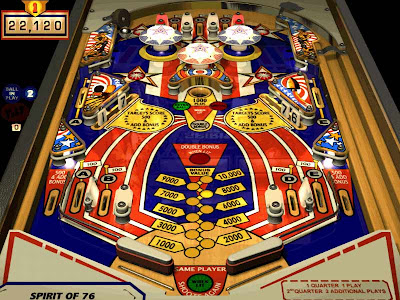For a lot of disabled gamers, many games are frustratingly difficult to play. Pinball should not be one of them, but frequently is. Help is at hand though for developers interested in bringing their games to a wider audience. Implementing these features won’t remove all game barriers for all people, but it would be a fantastic start.
Pinball Games Top 3 Accessibility Features List
1. Fully Re-definable Controls
The Problem: Many gamers struggle with preset controller layouts, as they just don’t suit the way they play. Such people include gamers using just one or two accessibility switches (e.g. many quadriplegics and people with spinal injuries). Other people just might not be able to reach all the buttons (e.g. people with hands that are too small to reach all the buttons comfortably such as young children). Gaming can be uncomfortable, painful and even impossible.
The Benefits: A much wider range of potential gamers will be able to play the game with this facility, using many different types of controllers. Greater comfort and playability for many.
Extra Suggestions: Allow remapping of multiple controls onto a single button. If you can map both left and right flippers and the plunger too – you can make your game accessible to a person using just a single switch.
2. Compatibility with Alternative Controllers
The Problem: Many games do not recognise the fact that people may prefer to use an alternative controller to a standard joypad. This can rule out the use of simpler controllers such as arcade sticks to specialised controllers such as QuadController (a controller that is completely controlled by the mouth and head turns). Adding re-definable controls will solve many of these issues, but without also taking into account that many people would prefer to use the simple on/off digital controls, a game will remain frustratingly inaccessible for them.
The Benefits: A much wider range of potential gamers will be able to play the game with this facility, using many different types of controllers.
Extra Suggestions: Making a game playable with a digital arcade stick or a single Wii remote controller for the Wii, will open the game up massively to many.
3. Easy Play Modes
The Problem: For the vast majority of people, if a game is too hard, then it is not going to be much fun to play. If a game is impossibly hard from the start, then this just seems like a slap in the face. What makes a pinball game too hard? Well, this is a larger than a top 3 list, but some examples are: no quick way to start a game, game speed to fast, ball is hard to see.
The Benefits: Including modes for easier play opens the game up to otherwise excluded gamers: the very young, certain disability groups and older people who may have slower reactions.
Extra Suggestions: Ability to adjust the virtual slope of the table to slow the game down (and there’s no such thing as too slow for some gamers). Include some basic uncluttered tables where it’s really easy to see the ball at all times. One button play – whereby the entire game can be accessed using a single button (see section three of this link for the one switch standard). Simplified menu systems for all: Real pinball typically uses two buttons for flippers, a plunger and a start button. If the entire game play and menu system could be reduced to this (with optional nudging in game play) life would be easier for all.
More Help? Try: Game Over, Barriers in Games, Help You Play and the GASIG.


0 comments on “Top 3 Accessibility Features for Pinball Games”